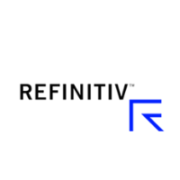Gartner and Blockchain: the Good, the Bad and the…
| 01-10-2019 | Carlo de Meijer | treasuryXL
Last year Gartner, the high-standard research institute, painted a rather realistic scenario for blockchain. In one of its research papers, Gartner stated that its latest technology hype cycle puts blockchain beyond the peak of expectations and is currently sliding down towards the trough of disillusionment stage. They estimated a 5-10 year timescale before it enters the plateau of productivity, or mainstream.
Now a year later, in a recent study Gartner show a more sober picture. They found that most enterprise blockchains have been ‘mistargeted’, and that most of the blockchains in use today will need to be replaced in a couple of years.
This raises a number of questions. According to some commentators, blockchain is having an identity crisis. They state that technology is constrained by assumptions and that technological immaturity is prohibiting efforts from moving beyond the pilot phase. Other say that this is just a normal stage in the development of a new technology?

The bad …..
First the bad news. The report gives a rather sober vision for blockchain technology and its near term development. According to their research that was published last June, Gartner predicts that by 2021, more than 90% of current enterprise blockchain platform implementations will fail or need to be replaced in a 18 months period. This is due to a fragmented blockchain market and ‘unrealistic expectations’ by CIOs.
A May 2019 report by Gartner already predicted that 90% of blockchain-based supply chain initiatives would suffer from ‘blockchain fatigue’ by 2023. Garner’s June research report however has a much broader industry base and should therefore be taken seriously.
Fragmented blockchain market
The blockchain and distributed ledger technology has already become highly fragmented in terms of platforms, standards and offerings. This makes it difficult for companies to push ahead with real-world uses.
Multiple blockchain platforms
The present blockchain platform ecosystem is a very fragmented one. Today CIOs can choose from numerous blockchains available using either private ledger approaches such as R3 Corda, Hyperledger and Digital Asset or public ones such as Ethereum. Each consortium is thereby trying to make their offerings ‘the de facto basis for value exchange and digital asset representation, smart contracts and decentralised applications’. Gartner does not expect that there will be a single dominant platform within the next five years.
Fragmented offerings
The blockchain platform market is composed of fragmented systems and offerings by blockchain providers that often overlap or are being used in a complementary fashion. The blockchain platforms and technologies market is still nascent and there is no industry consensus on key components such as product concept, feature set and core application requirements.
Companies are as a result unable to find an off-the-shelf, complete packaged blockchain solution. Hybrid offerings of conventional blockchain platforms are adding further confusion to justifying a use case. This adds more complexity and confusion, making it that much harder for companies to identify appropriate use cases.
No uniform standards
Blockchain standards esp. for financial services companies are currently fragmented and immature. Standards are critical for corporates esp. in the financial industry, because they are constantly moving assets between clients, partners and other institutions. Fragmented blockchain standards are likely to prevent widespread short term deployment of blockchain and distributed ledger technology in real-world systems. Until consortiums and standards groups come together on several industry standards or de facto standards emerge, the use of blockchain will be limited mostly to proofs of concept and pilot tests.
Implementation issues
No seamlessly integration
To achieve the true potential of blockchain, implementations must be seamlessly integrated with already installed software solutions. However, major software and SaaS providers are not offering blockchain solutions as add-on features to their enterprise solutions. Currently, integrating blockchain platforms with existing systems can cost organizations millions of dollars, which further slows blockchain adoption.
Lack of interoperability
Cross-industry interoperability standards are, and will be critical especially for financial services companies. These blockchain platforms however often use differing implementations, data formats, data interchange and directories, making interoperability among different blockchains difficult across organisations.
Lack of strong use cases
As a result of the above shortcomings there is a lack of strong use cases. Most projects have remained pilot projects, due to a combination of technology immaturity, lack of standards, overly ambitious scope and a misunderstanding of how blockchain could, or should actually help the industry.
Not meeting companies needs
According to Gartner, another major challenge that CIOs and IT decision makers currently face is that blockchain platform vendors often use (marketing) messages that don’t link to a target buyer’s use cases and business benefits. This may add to the confusion around blockchain capabilities and how they augment existing processes. Buyers are still confused as to how these functions are achieved or what benefits blockchain may add compared to their existing processes.
Overestimation by CIOs
Following from the results of the Gartner 2019 CIO Agenda Survey conducted from April through June amongst more than 3000 CIOs from almost 90 countries and across major industries, there is also a mismatch between expectation and reality about how they perceive blockchain technology.
The survey shows that many CIOs overestimate the capabilities and short-term benefits of blockchain as a technology to help them achieve their business goals, thus creating unrealistic expectations when assessing offerings from blockchain platform vendors and service providers. Even though they are still uncertain of the impact blockchain will have on their business, 60 per cent said that they expected some level of adoption of blockchain technologies in the next three years.
Misunderstandings by CIOs
There are a number confusions about blockchain technology leading to misunderstandings at CIOs. The vast majority of projects focus on recording data seeing it as the main offering of this technology. Many corporates however fail to use major capabilities of blockchain technology, such as decentralized consensus, smart contracts and tokenization.
Another misunderstanding amongst CIOs is their idea that the technology is already mature enough so that it is ready for production use. In fact many platforms however are still in a nascent and immature state far from being ready for large-scale production. Gartner however expects this will change within the next few years. And there is the wrong idea amongst many CIOs that protocols are identical to business applications. A protocol is the underlying technology such as Hyperledger Fabric of R3’s Corda and is invariably applicable to several industries. Applications need to be developed on top of these.
There is also the conviction in may CIOs mind that interoperability between various blockchain platforms is already a fact. Although some platforms talk about interoperability, Gartner finds it ‘challenging to envision interoperability when all the protocols are evolving quickly’.
The good ….
But it is not all bad news we can read in Gartner’s recent research paper. Despite the predicted gloom and the mismatch between expectation and reality, blockchain still has a solid future. Still the underlying technology is attractive and its potential uses cases vary across industries.
Impressive business value added
Although the technology will need constant updating, Gartner also predicts that by 2025, the business value added by blockchain to the industry will exceed $176 billion. More impressive is how this figure may surge to $3.1 trillion by 2030.
More stable applications
The ‘chaos’ in the blockchain solutions market is expected to only be a momentary challenge, ‘one that will pass as the hype-cycle dies down, and leads to more stable, enterprise-wide or rather industry-wide applications’. Within three to five years, many of blockchain’s core technical challenges are likely to be resolved. Given the attractive features of blockchain technology it can really drive interesting projects.
Standards maturity
Though it is very unlikely there will be a single de facto standard at all levels, Gartner expects that fragmentation will collapse and that we are three to five years away until standards mature and settle, resulting into no more than four dominant standards. This may allow for more interoperability among different blockchains.
“It’s unlikely there’ll ever be just one standard, but ultimately [there will be] a couple [of] standards bodies who’ll adjudicate…. Ultimately, there will be one or two standards..,. but no more than four”. Gartner
Blockchain capabilities as an add-on
Software suppliers, meanwhile, will integrate and upgrade their chosen blockchain versions and ensure compatibility with their own new software releases. In the next two to three years, Gartner expects all major ERP and CRM players to offer blockchain capabilities as an add-on feature for their software and SaaS products. These efforts will dramatically reduce the costs of deploying blockchain projects across the financial services organizations and their supply chains.
Transformational business impact
The 2019 Gartner Hype Cycle for Blockchain Business shows that the business impact of blockchain will be transformational across most industries within five to ten years. But these opportunities demand that enterprises adopt complete blockchain ecosystems. Future technology developments and removing remaining obstacles may enable that.
“Making wholesale changes to decades-old enterprise methodologies is hard to achieve in any situation. However, the transformative nature of blockchain works across multiple levels simultaneously (process, operating model, business strategy and industry structure), and depends on coordinated action across multiple companies.” Gartner
More intelligent applications
In the future, more intelligent blockchain applications are expected, in line with Gartner’s predictions. Especially as we move further on the Hype Cycle and past the so-called “Inspired Solutions (phase 2)” by 2022 and get well into “Complete Solutions (phase 3)” form 2025 onwards. And finally reach he Plateau of Productivity – the point at which mainstream adoption takes off.
And the …… way forward for CIOs
Companies working with the ‘myriad’ of blockchains available today should realise it is ‘highly unlikely’ the one they are using now or are planning to use short term will become the industry standard in five years. Corporates therefore need to investigate intensively how to navigate the next blockchain wave best.
Well–founded business plan
Many companies want to be fluent in blockchain before the technology is everywhere. For that they need a well-founded business plan. Those who fail to do sufficient scenario planning, experiment with the technology, and delay consideration of decentralization and tokenization risk significant long-term disintermediation.
Recommendations
Understanding and learning how to leverage the technology to create useful and practical solutions, is of utmost importance. In order to help CIOs in their blockchain journey, Gartner came up with a list of recommendations and valuable advices. CIOs should continue to educate executives and senior leaders about the blockchain opportunities and challenges most critical for business.
CIOs should also be aware of complicated challenges and of a number of impediments when deploying blockchain projects: standards, governance, integration and interoperability. They should therefore pay close attention to these hurdles blockchain projects face. In order to get used to blockchain technology and its applications, it is important for CIOs to continue to develop proofs of concept internally as well as part of market consortiums. By doing this they may learn how to leverage the technology to create useful and practical solutions, to take good decisions.
This Garner Hype Cycle is a very useful tool for corporates to get insight in the scope of blockchain’s transformation, how it impacts various industries as well as may show the current state and evolution of this technology.

Economist and researcher









